11 things that surprised me while touring Costco with superfans who consider it their 'happy place'
David and Susan Schwartz are two of Costco's biggest fans.
The NYC-based couple has visited over 200 stores and co-wrote a book based on their travels.
I haven't been to Costco in years. When I went with the couple, I learned plenty of surprising facts.
As my car pulled up to the Costco warehouse in Brooklyn, New York, I felt a wave of nostalgia wash over me.
The last time I'd set foot in a Costco, I couldn't have been older than 6 or 7 and was accompanied by my mom.
This time was different. This time, I was venturing back into Costco with two of its biggest fans: David and Susan Schwartz.
For the last seven years, the New York City-based couple has traveled to over 200 Costco locations around the world to produce their first co-written book, "The Joy of Costco: A Treasure Hunt from A to Z."
They love Costco so much that they once told me it was one of the first things they bonded over when they started dating in 2002.
"It's my happy place," Susan, who previously worked in marketing for Nabisco and at a bakery, said.
A few minutes after I arrived, I met Susan and David outside of the entrance. Smiling widely and brimming with excitement, almost as if they were two kids about to enter a candy store, the pair reinvigorated my Costco curiosity. Together, we set out to explore the warehouse, where I learned several surprising things that I never would have noticed without having them there as tour guides. Take a look.
As soon as we entered Costco, David and Susan pointed to a special aisle of promotional items known by insiders as "The Fence."
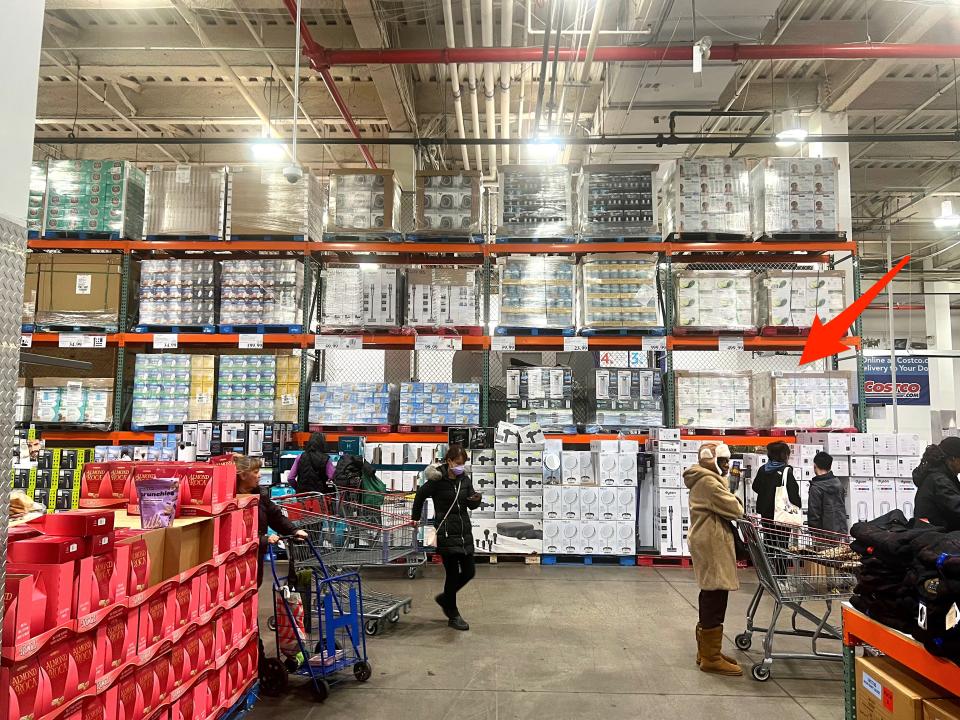
According to David and Susan, every Costco warehouse has an aisle of special promotional items stacked by a fence located near the entrance, an area that's come to be known by shoppers and employees as "The Fence."
Its origin dates back to the early years of Costco, when it merged with Price Club in the 1990s.
"This goes all the way back to the very first Price Club, which was in San Diego on Marina Boulevard," Susan said. The warehouse, which was being used for a different purpose, came with a seemingly random fence.
"They said, 'It costs money to take it out. Let's just use it for merchandising.' And so, everywhere else since then, Costco warehouses have had a fence like this," she said.
The items on the fence at the time of my visit seemed to lean toward homeware and toiletries — there were boxes of Always menstrual pads, clothing steamers, electric razors, and toothbrushes.
Costco has self-checkout machines and cashiers. According to David and Susan, the cashiers are quicker.

Unlike other national stores like Trader Joe's, some Costco locations offer shoppers the chance to choose between self-checkout or cashiers, though a majority of locations still require guests to check out with the help of actual employees.
According to David and Susan, the implementation of self-checkout machines is a "constant debate" among Costco higher-ups.
"Cashiers, who do the registers, are really, really fast," David said. "Much faster than a normal civilian, but they decided to keep this because the experiment seems to be working to have both."
Costco employees rush to clean any dirt on the floor, even if that's not their job, the couple said.

One of the first things that Susan and David told me to do when we started our visit was to take notice of how spotless the floors of the warehouse were. As I looked around, fluorescent white light from overhead reflected off the gray floors, revealing zero dirt or junk lying around.
That's because every Costco employee is expected to pick stuff up off the floor that doesn't belong there whenever they see it.
"Everybody from the CEO on down, they see something, they stoop and get it," Susan said.
I wouldn't have known the significance of the tiny asterisks on the signs next to some items without David and Susan's guidance.
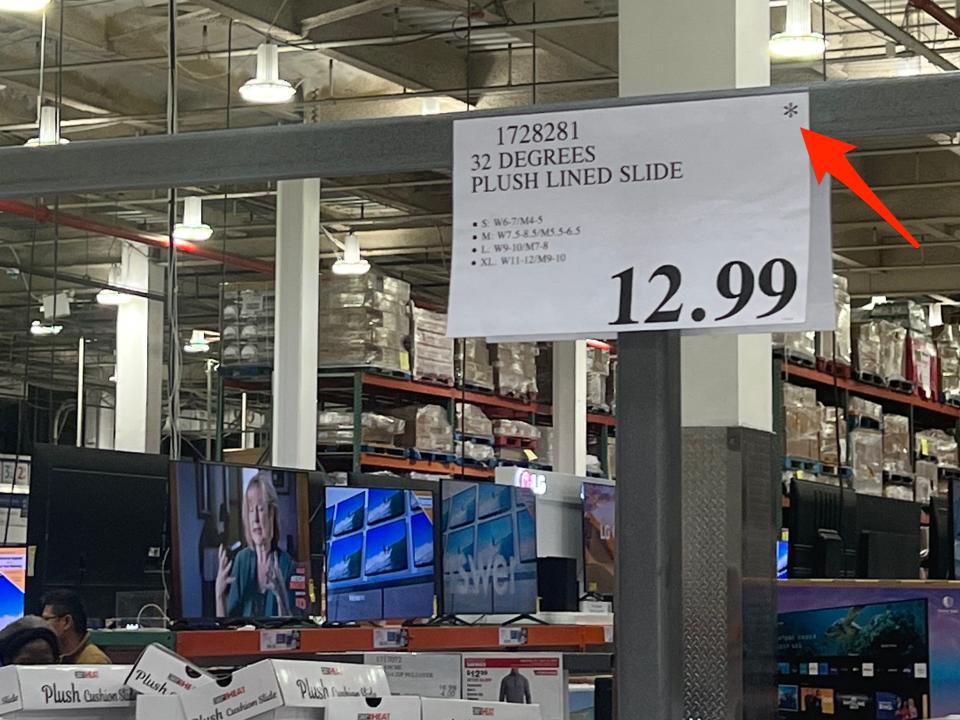
Known among employees and regulars as the "Death Star," the tiny asterisks dotted on the information and price tags of some items mean that they probably won't be sold at Costco for long, according to David and Susan.
"That means this item is about to be discontinued, either temporarily or permanently," Susan said. If an item gets a "Death Star" and members are particularly fond of it, its fate can be reconsidered. "So if you like it, get it," she added.
Costco products are displayed in the packages they arrive in from manufacturers. According to the couple, that means employees don't touch any items until they are scanned for purchase.
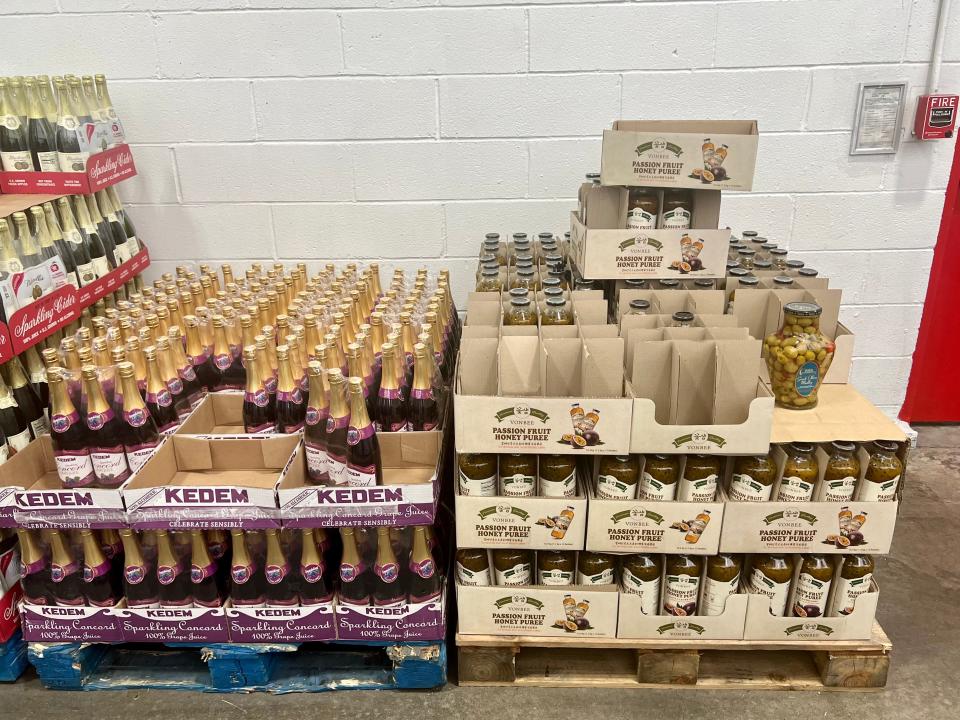
According to David and Susan, Costco can cut costs on extra packaging and handling by displaying items for sale in the original packing they arrive in from manufacturers.
As the couple pointed out, that also means that it's unlikely an individual item has been touched by a Costco employee at any moment before it's been sold.
Susan walked me through the process using a jar of vitamins as an example.
"The first time an employee touches this individual jar of vitamins is when you pick it up and put it on the conveyor belt and they pick it up to scan it. Until that point, they haven't touched an individual thing," she said.
I naively thought that Costco sells all of its food products in bulk, but David and Susan said that isn't the case.
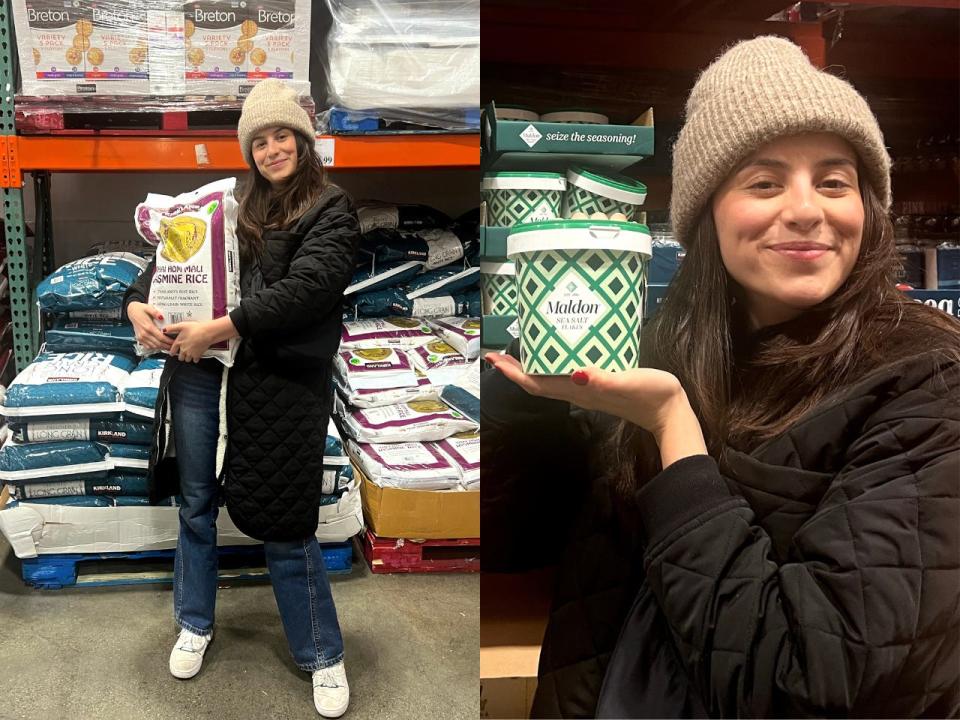
Besides pantry staples, including salt, rice, olive oil, and eggs, which are often sold in bulk at Costco, I discovered that it is possible to grocery shop at the wholesaler if you live in a smaller household.
"People say you have to buy in bulk," David said, as he directed me toward a small jar of artisanal-looking mayonnaise. "But you don't have to."
"That's a total myth," Susan added.
The couple also said that the variation in the sizes of the food items Costco sells means that its customers aren't only regular shoppers, but commercial restaurants too.
"A lot of small businesses, restaurants, and corner stores will shop here because the prices are so good," David said.
Costco employees are constantly moving empty packages to areas of the warehouse where shoppers can reuse them to store the items they buy.
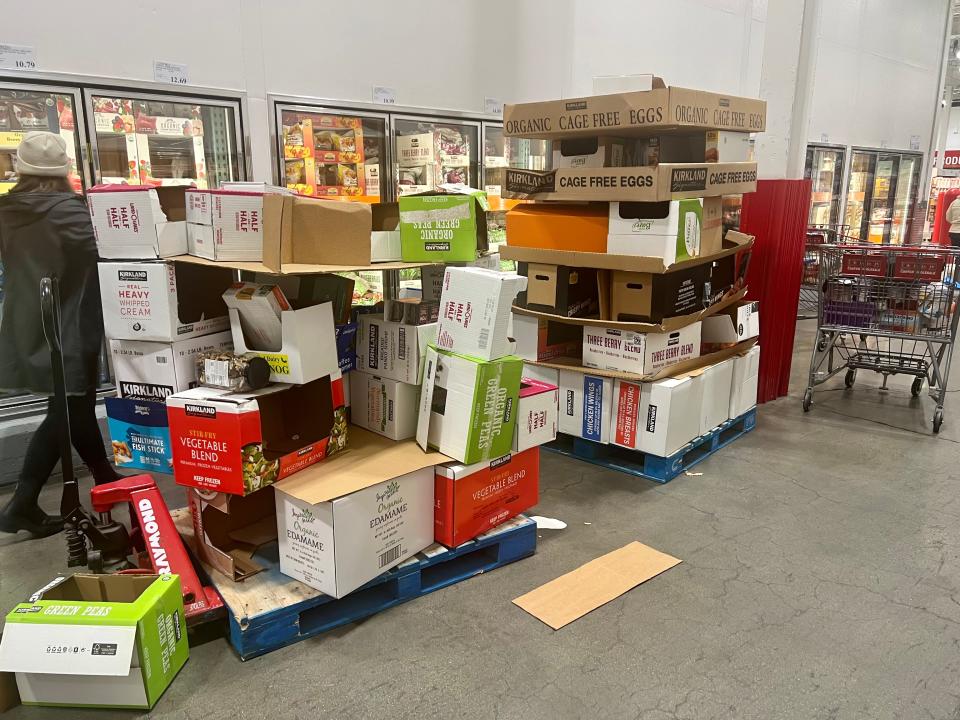
According to Susan, one of the things that Costco's co-founder and former CEO James Sinegal was most passionate about was clearing away empty boxes from the shelves.
"Jim Sinegal, the co-founder, he'd say, 'We're not selling cardboard,'" Susan said.
Because of that, "de-boxing" is a Costco tradition. It means that whenever a Costco employee spots an empty or nearly empty box, they remove it and place it in an area that shoppers can pass by. Instead of bringing their own bags, shoppers can then choose to reuse the packaging to store any items they buy at Costco — for free.
"You'll see people might have boxes underneath their cart. So later on, when they pack up, they don't pack bags or anything," Susan said.
I probably wouldn't have noticed the timestamp on Costco's famous rotisserie chickens, which indicates they have two hours to be sold before they are removed from display.

As David and Susan previously told me, Costco's famous $4.99 rotisserie chickens are timestamped the moment they leave the oven.
They are then put on display for approximately two hours. If they don't sell, the chickens are removed and repurposed for other grocery items such as soups, salads, tacos, and more, the couple said.
Costco shoppers can get their money back if they buy avocados that don't ripen correctly, Susan said.
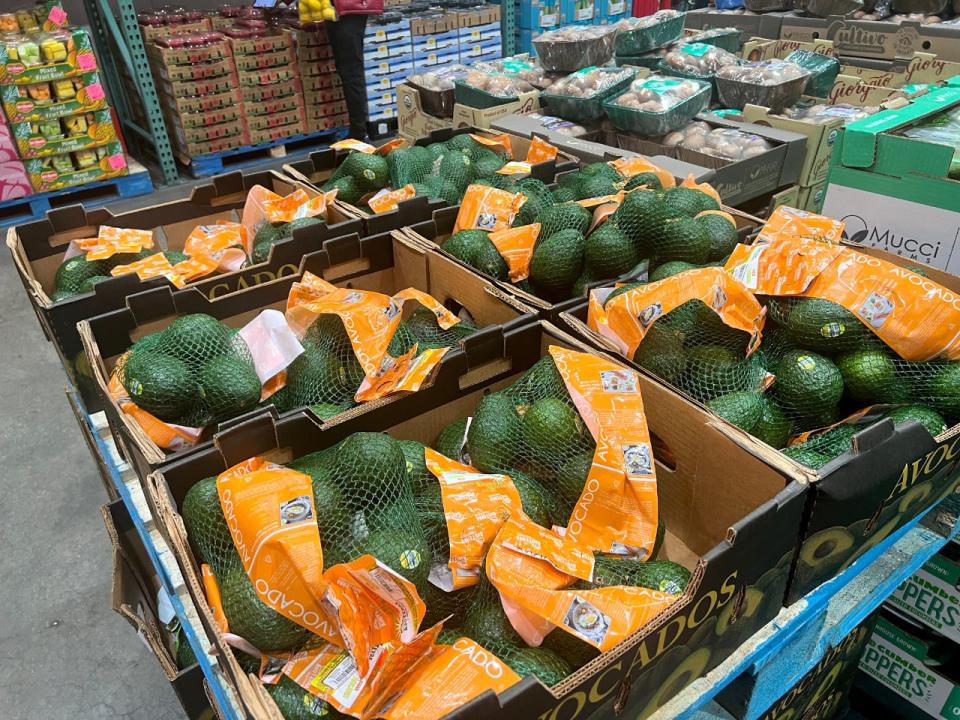
One of the final sections I toured with David and Susan was the fresh produce area. As we strolled around, Susan brought my attention to the cardboard crates displaying bags of green avocados.
"The avocados are great," Susan said. "And if they don't ripen properly, you bring them back and they take them back and then give you refunds with no discussions."
According to Susan, having an entire batch of avocados go bad isn't a common occurrence.
"It happens rarely, but sometimes they could just all go black or something will be wrong with them," she said. "I just bring them back and go, 'These didn't ripen well,' and get money back."
Even though Susan and David are Costco veterans, they are still shocked by how random Costco's product placement appears.

As someone with very hazy memories of shopping at Costco as a kid, I was surprised by how random the stock in most of the aisles seemed. As we ventured through different sections, I spotted items like Duracell batteries sold next to a singular keyboard set, sneakers next to washing machines, and waxed Amaryllis bulbs next to Command strips.
"It's just so random," I said to David and Susan, expecting them to have an explanation of the method behind the madness.
But other than saying that the store layout is more carefully planned out than it might appear, they didn't offer a concrete answer.
That said, the couple did tell me that Costco's randomness is part of the fun of shopping there.
"Welcome to Costco," Susan said, as we went from an aisle selling chocolates to one selling car batteries. David chuckled in response.
The biggest compliment you can give a Costco employee is that the section they are covering looks "showtime ready."
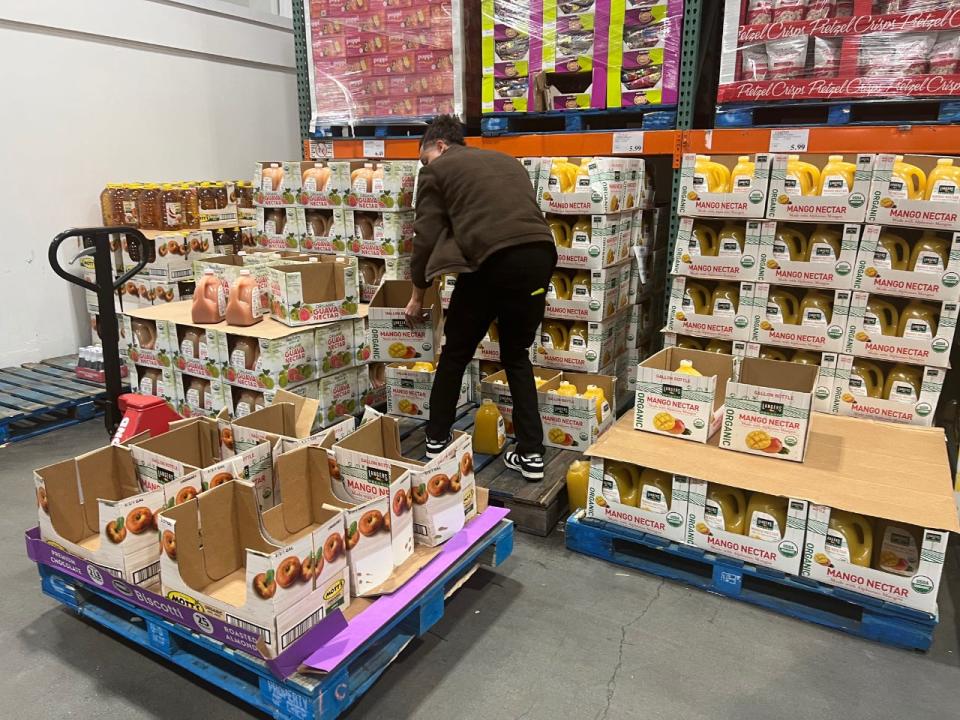
Toward the end of our tour, Susan and David paused to approach a Costco employee who was working on de-boxing empty cartons of fruit juice.
I stood and watched as they engaged in a quick conversation, which ended with the employee giving a warm thanks before returning to his task.
"What was that?" I asked the couple.
"The biggest compliment you can give is showtime ready," Susan said. As they previously told me, the phrase is used by Costco employees to refer to how pristinely organized a warehouse is when it opens.
Telling an employee that the section they are working on looks "showtime ready" is just another way of saying they've done an amazing organizational job, which is something Costco has always prided itself on, according to Susan and David.
Read the original article on Business Insider


